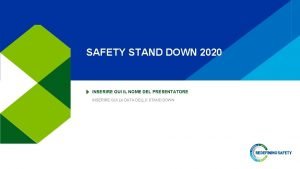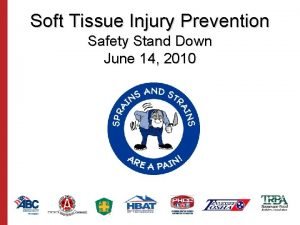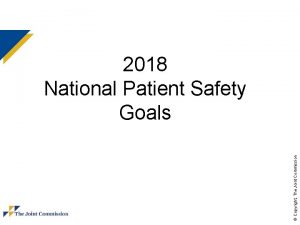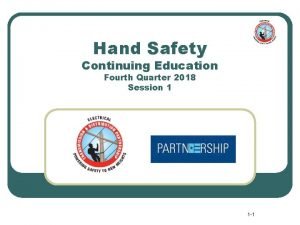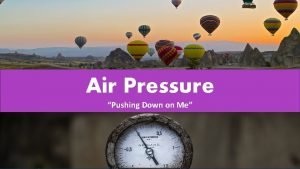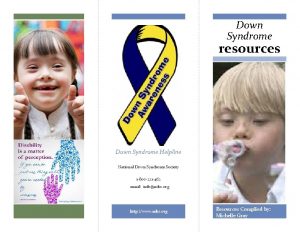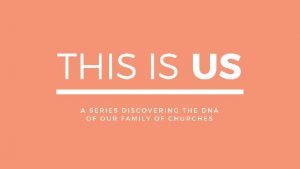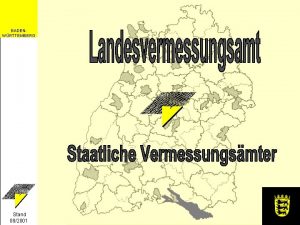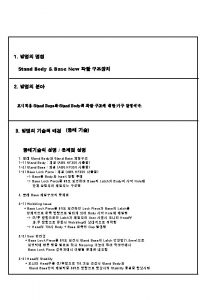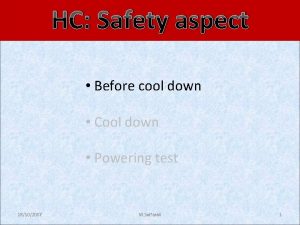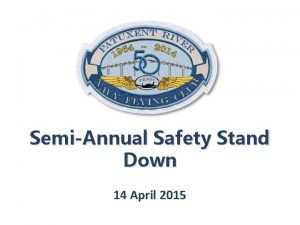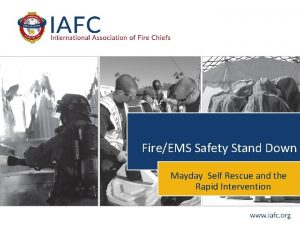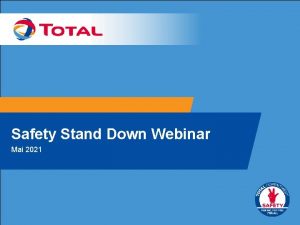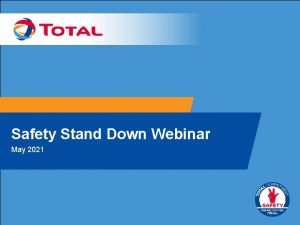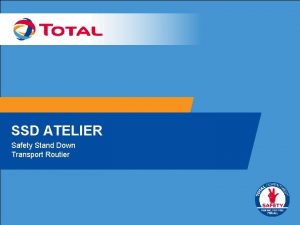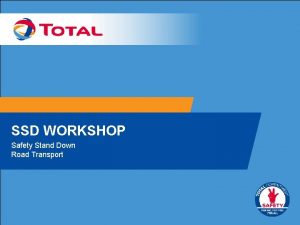Safety stand down 3 31 July 2018 Stand

















- Slides: 17

Safety stand down 3 -31 July 2018 Stand down briefing material - external use 11/7/18 / 1

Agenda 1. Introduction and purpose of the session 2. The seemingly ordinary 3. Team discussion 4. Call to action 25 -Feb-21 / 2

Why are we having a Safety Stand Down? A 20 year old colleague lost his life in a fall on 5 th June 2018 25 -Feb-21 / 3

Sketch created 28 June 2018 based on information at the time and solely for the purpose of the safety stand down. This accident is still under investigation. 25 -Feb-21 / 4

Exercise 1 What do you see? Sketch created 28 June 2018 based on information at the time and solely for the purpose of the safety stand down. This accident is still under investigation. 25 -Feb-21 / 5

Ordinary tasks also need risk awareness • A combination of small, seemingly isolated risks combined to create a fatal accident • There were many opportunities to prevent this accident – in the planning and in the execution. We will learn the lessons from this accident and they will be communicated when the investigation is complete: • Working at heights / use of ladders • Safe planning • Risk awareness / exclusion zones 25 -Feb-21 / 6

Legacy – safety engineering & processes Previous accidents have left a lasting legacy that have changed our approach to safety Event Clapham Junction 1988 Ladbroke Grove 1999 Hatfield 2000 Lambrigg 2007 Legacy change Fatigue management introduced Introduction of Train Protection & Warning System (TPWS) Inspecting for rolling contact fatigue Tubular stretcher bars introduced 25 -Feb-21 / 7

Legacy: making safe behaviour a habit Presentation Title: View > Header & Footer We must challenge the culture and behaviours that allow small risks to go undetected or tolerated • We still have too many accidents and near misses with similar root causes • How do we create a culture where safety and risk awareness is always present so that we look after ourselves and we look after each other? • How can we make safe behaviour a habit and one that we do even when no-one is looking? 25 -Feb-21 / 8

Exercise 2 When do ordinary activities become unsafe? Discuss in groups: 1. The tragic fatality and the two very Have you had an accident or near miss which involved an serious ordinary task? near misses all occurred within just 1 week 2. What would have prevented these events? 3. When was the last time you intervened when you saw an Theyact, allat could have unsafe home or at work? been prevented with higher risk awareness 25 -Feb-21 / 9

An ordinary activity for all of us – at work or at home 1, 000 deaths every year: stairs are the place where most fatalities happen in the home 25 -Feb-21 / 10

An everyday task: make using the safe system a habit The tragic fatality and the two very serious near misses all occurred within just 1 week They all could have been prevented with higher risk awareness 25 -Feb-21 / 11

Exercise 3 Thethe tragic fatality and the two very Using handrail serious near misses all occurred within just 1 week Discuss as a group: They all could have been prevented 1. Why don’t we use the handrail when it’s there? with higher risk awareness 2. Why do you think we’re focusing on holding the handrail? 3. What would stop you from intervening if you see someone not holding the handrail? 25 -Feb-21 / 12

Reaction to intervention The way we react when challenged is massively important to our culture. Negative reaction • Don’t react in negative or defensive way. If you do, you make it more difficult for that person to challenge in future. Positive reaction • If you thank someone for caring about your safety – not only will you be safer, but you will make them feel more inclined to keep challenging unsafe practice in future. The ‘next time’ could be over something very serious… 25 -Feb-21 / 13

We can change our behaviours! There have been five fatalities in CP 5 caused by driving accidents In four cases the failure to wear seat belts was a contributory cause - 80% reduction in accidents! When we installed the Vehicle - 33% reduction in staff injuries! Speed Warning System we achieved - £ 2 million saving in fuel costs an instant change to driving behaviours - £ 1. 5 million saving in repairs Safety and Performance go hand in hand 25 -Feb-21 / 14

A step change in our safety culture ‘Hold the handrail’ • Our safety culture protects us, and the public who depend on us • Holding the handrail • is a simple way to reduce the chance of hurting yourself • gives us the opportunity to practice our intervention skills • it symbolises and demonstrates our personal commitment to our safety culture – every day • We want a safety culture that eliminates the small isolated failings • This culture will save lives 25 -Feb-21 / 15

Call to action ‘Hold the handrail’ The tragic occurred within just 1 week I make the commitment to: They all could have been prevented • with Always higher use the handrail on stairs/steps with handrails risk awareness • Always intervene if I see someone not holding the handrail • Watch out for hazards in any task • Use safe systems even when activities are considered ordinary • Act safely both at work and at home 25 -Feb-21 / 16

#holdthehandrail 25 -Feb-21 / 17
 The hot july sun beat relentlessly down
The hot july sun beat relentlessly down Hands up on your hips
Hands up on your hips June too soon july stand by
June too soon july stand by Safety stand up
Safety stand up Safety stand down
Safety stand down Soft tissue examples
Soft tissue examples Que letra continua m v t m j
Que letra continua m v t m j Q2 national patient safety goals
Q2 national patient safety goals Hand safety presentation 2018
Hand safety presentation 2018 2018 national patient safety goals
2018 national patient safety goals Spirit break out heaven come down
Spirit break out heaven come down There's a place where mercy reigns and never dies
There's a place where mercy reigns and never dies Book
Book I fled him
I fled him Oscar and alphonse harris burdick
Oscar and alphonse harris burdick Captain tory harris burdick
Captain tory harris burdick July 1-4 1863
July 1-4 1863 Tender mean
Tender mean




